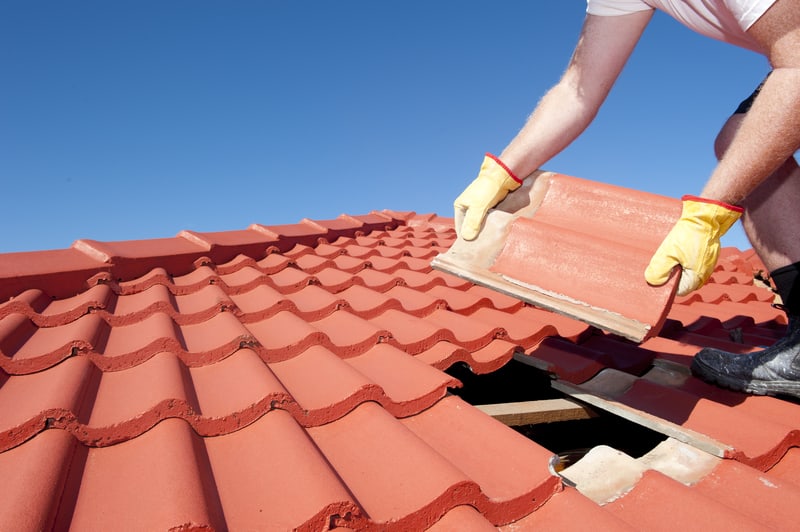
Whether you’re in the market for a newly constructed property, designing a new home or office, upgrading the current roofing material, or replacing worn out or damaged material, choosing tile as the roofing material has both positive and negative things to consider.
Benefits of Tile Roofing
Overall, tile roofing is a popular choice due to its durability, protection and ventilation factors, energy savings, and long-lasting performance. Additional benefits include the following:
- Longevity – the lifespan of a properly installed tile roof by a professional roofing contractor can range from 50 to 100 years giving it a significant advantage over a less expensive material such as asphalt.
- Durability – tiles have a high capacity for enduring sustained winds, they are not susceptible to biting or chewing insects, and tiles are non-combustible.
- Curbside appeal – tiles are available in a variety of colors, sizes, and shapes. They are designed to complement all types of architectural styles and blend with any exterior paint color.
- Concrete or clay tile – whichever type of material is selected, tiles not only retain their color, they are one of the easiest roofing materials to install. Tile roofs also require minimal maintenance.
- Increased property value – because the material is energy efficient and can be recycled, the home is considered “green” which increases the property’s value.
- Marketing – a home with a tile roof can be marketed with a focus on potential buyers interested in an environmentally friendly property.
- Selling -.for potential buyers, a home with a tile roof is an investment that saves the out-of-pocket expense of a new roof due to the lifespan of tile.
- Energy savings – air flows naturally beneath the tiles resulting in a well-ventilated home that is warmer during winter cold snaps and cooler during the heat of summer. Because of the natural ventilation, monthly energy bills are lower.
Negatives of Tile Roofing
Of the many roofing materials, such as asphalt shingles, wood shakes, slate, rubber, metal and tile, the cost per square foot varies considerably based on the material itself as well as the region where the home is located.
- Costly – the estimated cost of clay tiles ranges between $11 per square foot or over $15 per square foot. Concrete tiles are generally less expensive. Find the cost of a tile roof using an online roofing calculator based on the home’s square footage and zip code.
- Installation – while tile is one of the easiest materials to install, the project requires the expertise of a licensed and bonded roofer experienced in cutting and installing tiles.
- Structurally sound – if the current roofing material is not tile, the home will need to be inspected to determine if it can bear the weight of the tiles, or if support beams must be installed. In some cases, a tile roof may not be an option.
- Quality material – a tile roof can outlast standard underlayment, screws, nails, flashing and fasteners. This means the contractor should use only those materials that also have a long lifespan, which could increase the cost of the new roof.
- Replacement and repair – should the flashing or underlayment deteriorate, depending on the extent and severity of the damage, it’s possible all the tiles would need to be removed.
- Damage – tiles are sturdy but can be broken especially by someone accessing the roof who is not skilled at walking on the material, Broken tiles need to be repaired by a professional roofer to avoid additional damage to the roof.
When planning a roofing project, consider the pros and cons, work directly with a roofing professional, and ask questions to ensure a tile roof is a viable option for your home.
The Good and Bad of Tile Roofing
Call Us On (510) 521-7334
Your Local Roofers Since 1978
We invite you to contact us today for an estimate on your roofing project.
1814 Clement Avenue Alameda, CA 94501
(510) 521-7334
info@centralbayroofing.comLicense: 435272 Class B, C-39
Site powered by RooferBoost
Copyright 2017 Central Bay Roofing and Restoration | Login
